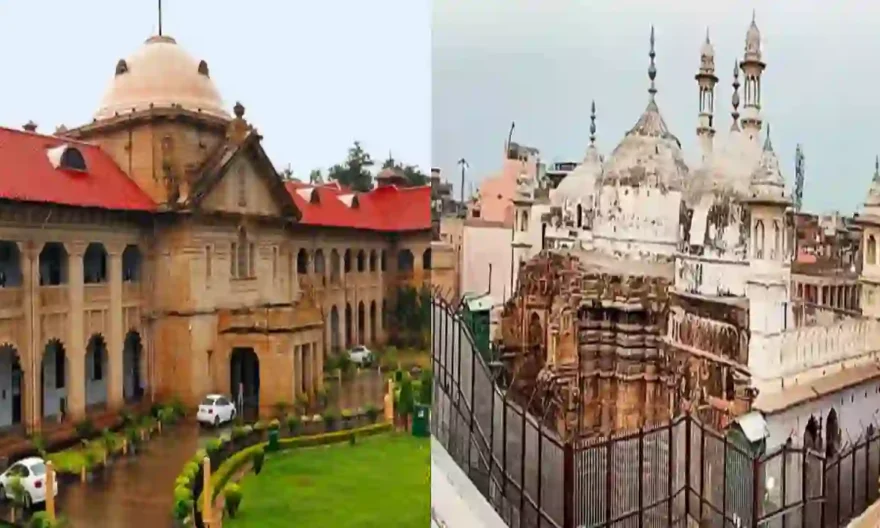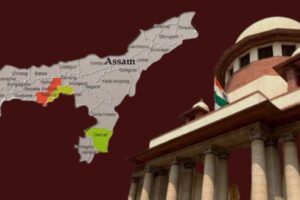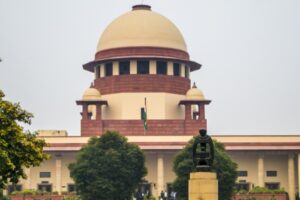
Senior Supreme Court advocates Harishankar Jain and Vishnu Jain on Wednesday told the Allahabad high court that the case was not barred by the Waqf Act as Aurangzeb had never declared it a Waqf property. The argument from the Hindu side will continue on Thursday as well.
The Allahabad High Court was hearing Gyanvapi masjid management’s revision petition challenging a Varanasi court order on the maintainability of a petition against the demand for regular worship of ‘Shringar Gauri’
On December 8, Hari Shankar Jain, the counsel representing the Hindu side in a Kashi Vishwanath-Gyanvapi mosque case, submitted an old map of the Vishweshwar temple to the Allahabad High Court.
Hari Shankar Jain, the counsel representing the Hindu side in a Kashi Vishwanath-Gyanvapi mosque case, claimed in the Allahabad High Court that The existence of a temple on the disputed site in Varanasi and its demolition to build a mosque is mentioned in religious and history books.
Hari Shankar Jain also argued that the Vishweshwar temple map was made by the then District Magistrate James Princip in British times in 1836. He also explained about maps. He also submitted a plan for the old Vishweshwar temple.
Hari Shankar Jain also explained about the old Vishweshwar temple.
where there are three domes and Shringar Gauri, Ganesh, and Dandapani Mandap, the idol was established there and was being worshipped. It was closed in 1993 whereas, before this regular worship of Shringar Gauri continued, Jain reiterated the old history of the temple in his argument.
On December 5, Hindu side advocate Harishankar Jain argued that the Shivling in Kashi was established by Lord Shiva himself, which is why it is called Swayambhu. It is also described in the Kashi section.
The Hindus have been worshiping Shringar Gauri since before 1947. He has only demanded the right of worship, which does not violate any legal right of the petitioner. In Islamic law, worship on others’ property is not accepted.
Vishnu Shankar Jain also drew the attention of the court towards the mythological facts and the decisions of the court. Said, there is a detailed description of it in Adhyay 99 and 100 of Skanda Purana, Shloka numbers 61 to 70. It has been proved in this order that the Vishweshwar Nath temple was damaged during the time of Muhammad Ghori and Mughal ruler Aurangzeb. The court adjourned the hearing of the case till Tuesday.
On 30 November, the Gyanvapi mosque management committee concluded its argument on its plea challenging a Varanasi court order on the maintainability of the case filed by five Hindu women who sought permission to offer regular prayers to idols of deities in the mosque compound.
Earlier, Senior advocate SFA Naqvi, argued that the Waqf Act and the Places of Worship Act of 1991 were mainly cited by the arrangement committee of the mosque. The arrangements committee of Gyanvapi Masjid has made Rakhi Singh as well as 10 people, including the five plaintiff women and the UP government, parties in this case.
The mosque’s arrangement committee has filed a petition in the Allahabad High Court against the verdict of the Varanasi district in which the court had rejected the objection of the Muslim side.
The Varanasi district court had on September 12 dismissed a plea by the mosque committee Anjuman Intezamia Masjid (AIM) which challenged the maintainability of the suit filed by the five Hindu plaintiffs.
A total of five petitions related to the Gyanvapi dispute of Varanasi are filed in the Allahabad High Court.
Last year, five women, including Rakhi Singh, had filed a petition in the district court of Varanasi, seeking permission for regular worship of Shringar Gauri in the Gyanvapi campus.





